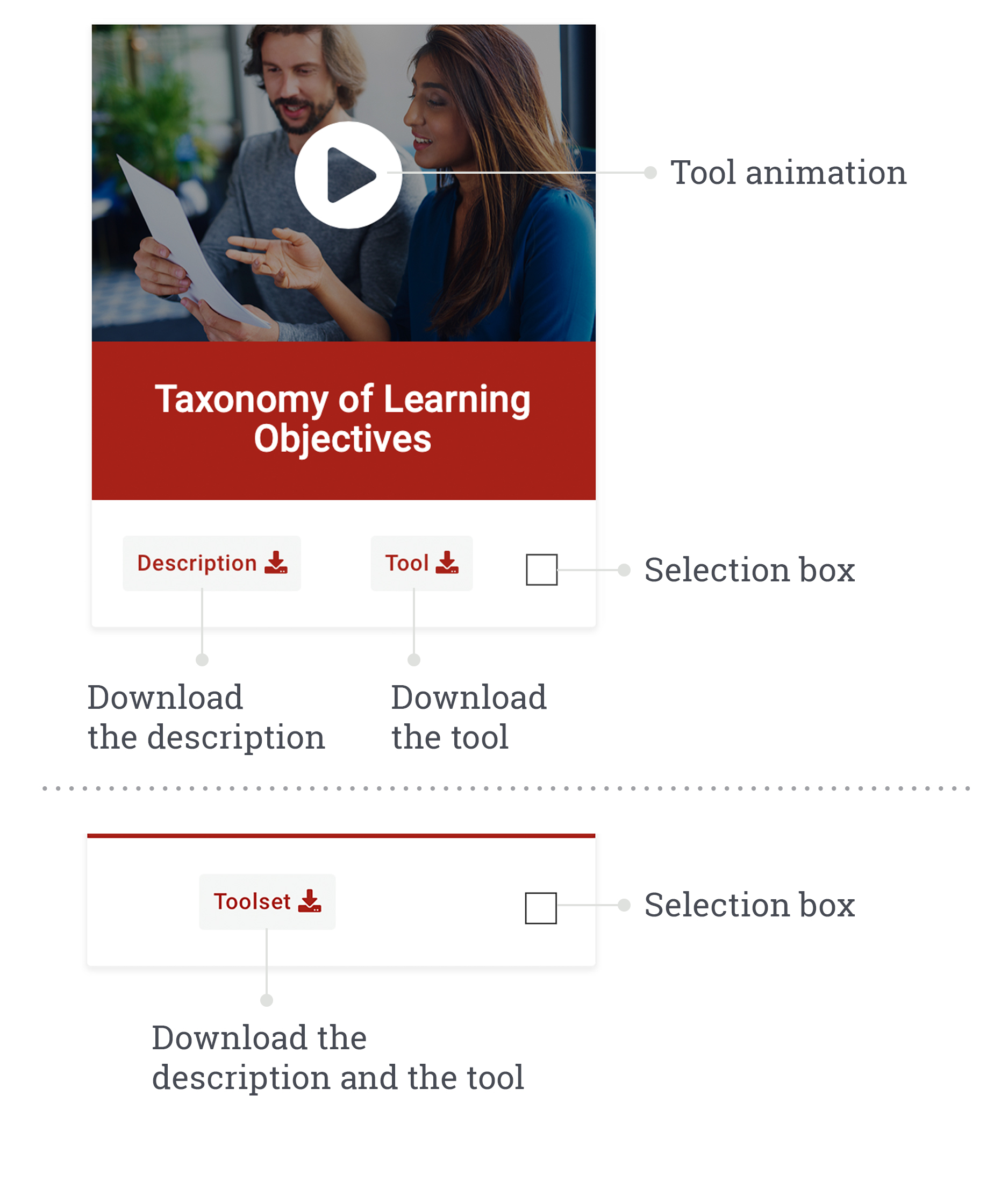KEY CONCEPTS
Unit 1
The ABCs of performance assessment
Following are the main concepts to remember in order to gain a better understanding of performance assessment in the context of placements.
- Performance assessment is a process that leads to a verdict on the trainee’s performance, based on valid and legitimate information.
- The assessment process plays a crucial role in the trainee’s journey, and it also has an impact on your skills as a supervisor and on the quality of care provided to patients.
- We reviewed two types of assessment:
- The formative assessment, which promotes the development of the trainee’s competencies, by highlighting his strengths and challenges and by planning strategies to alleviate these challenges.
- The summative assessment, which consists in an overview and summing up of the trainee’s progress, comparing it against criteria established by the academic setting.
- The assessment process includes five steps:
- Planning
- Collecting information on the trainee’s behaviours
- Interpreting the information
- Communicating appreciations to the trainee (feedback)
- Decision-making
Unit 2
Planning a trainee’s assessment
Throughout this unit, you explored various aspects that will allow you to forge a pedagogical alliance with your trainee, which will in turn ensure that your trainee’s assessment process starts on the right foot:
- It is essential to build a trusting relationship with your trainee so that both parties communicate openly.
- Discussions about mutual expectations, learning objectives as well as criteria, indicators and descriptors which will be part of the trainee’s assessment foster mutual understanding and prevent any disagreement.
- The development of a learning contract with your trainee will set out in writing the assessment process used during the placement (objectives to achieve, assessment methods and dates, etc.) and ensure that both parties are in agreement on these matters.
Unit 3
Collecting information: what and how?
This unit addressed the various aspects that need to be considered when collecting information on your trainee’s competencies for assessment purposes:
- Collecting information is a step that must be meticulously conducted, using various methods at different moments to gather information, in order to create the best representation of the trainee’s performance.
- To appreciate the evolution of the trainee’s competencies, the supervisor will need to collect information on the internal resources that the trainee mobilizes in various situations, namely knowledge, know-how and self-management.
- Performance assessment must rely on facts, which are careful observations of phenomenons as they occur, without modification, and that everyone agrees on.
- Collecting information requires reliable tools that lead to the objective measure of the three levels of knowledge, such as observation (direct or indirect), evaluation grids, questions in the form of discussions, reviews of written files, videoscopy, role plays, clinical vignettes and concept maps.
- To enhance his process for collecting information, the supervisor uses several formats in his assessment: self-assessment, co-assessment and 360° assessment. Your trainee, his fellow students, but also your colleagues and patients with whom your trainee had contacts could also provide relevant information, thus painting a broader picture of your trainee’s learnings.
- Your trainee can also rely on tools such as videoscopy, role plays, clinical vignettes, concept maps, logbooks and portfolios to develop his self-assessment skills.
Unit 4
Interpreting the information
In order to adequately interpret the information you collected and to make a fair judgement, it is important to remember that:
- Judgement consists in drawing a conclusion or stating an opinion about the acquired competencies; it must be based on measurable facts.
- To maintain objectivity in his judgement, the supervisor must accept the existence of subjectivity, while being mindful of his personal filters and avoiding the selection of facts and generalizations.
- Being aware of one’s own cognitive biases is the best way to counter them.
- Ethical notions of thoroughness, transparency and confidentiality must be at the forefront of an objective judgement.
Unit 5
Communicating your appreciation to the trainee: the principles of effective feedback
Throughout this unit, you had the opportunity to grasp important notions that are inherent to feedback:
- Feedback is essential to fostering learning.
- It is an interactive and bidirectional process.
- Feedback is precise, specific and concerns observations and various aspects related to the trainee’s performance.
- Several methods allow you to formulate and structure your feedback, namely the feedback sandwich, the chronological mode, the Ask/Tell/Ask approach, the PEARLS model, the one-minute supervisor, the R2C2 model, Pendleton’s model or Hattie & Timperley’s feedback model.
- Feedback should be given at different moments, according to the situation. However, feedback should generally take place as soon as possible after the observation period.
- Our 15 tips will assist you in articulating your feedback strategically.
Unit 6
Decision-making: a key step in the assessment process
Through this unit, you gained a better understanding of the last step in the assessment process.
Decision-making:
- Is central to the assessment process and decisive with regards to the placement progress
- Is based on formative assessments aimed at improving learning. It allows the supervisor to gauge the congruence of assessment modalities as related to the trainee’s learning objectives and to adjust support strategies
- Is based on summative assessments, aimed at measuring learning. It allows the supervisor to:
- Validate the achievement of the level of competence s against predefined criteria
- Identify future learning needs
- Inform the academic setting that the trainee’s placement was a success, a failure or that changes need to be made
- In adopting the roles of counsellor and confrontation advisor, you will be able to apply the proposed suggestions to simplify the decision-making process when assessing a problem trainee.
